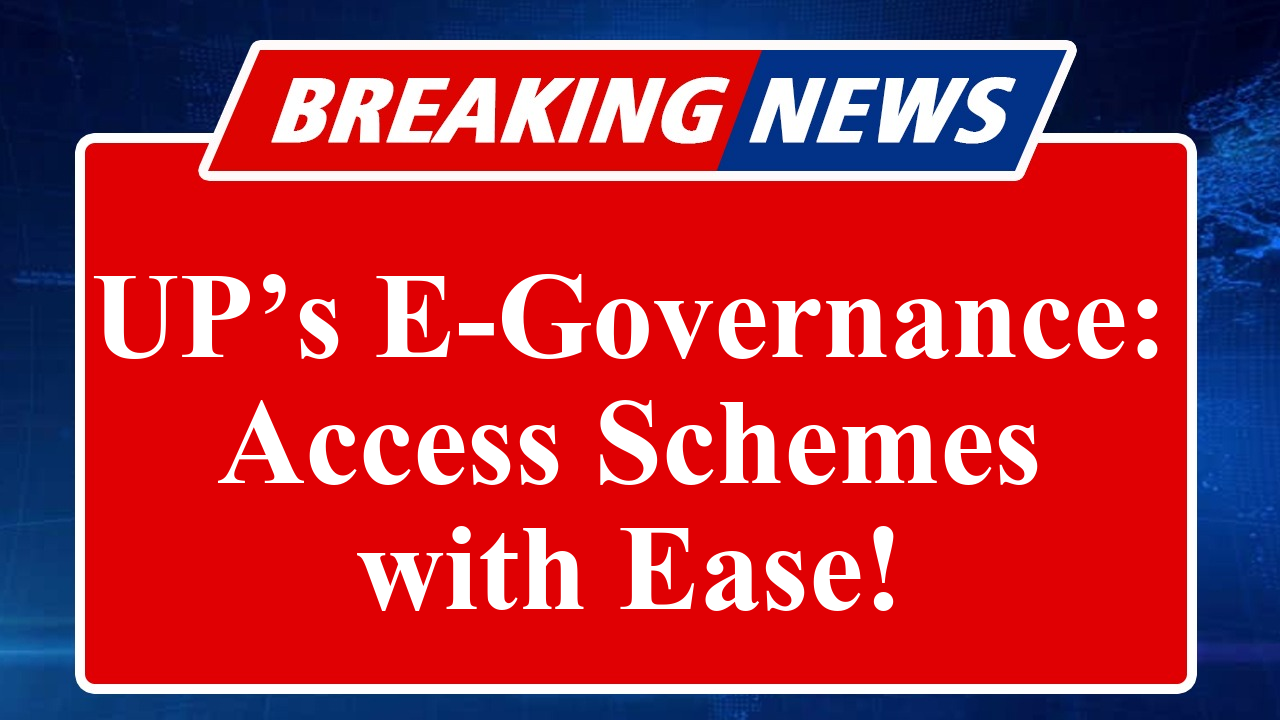“Uttar Pradesh’s e-Governance portal has transformed access to government schemes, offering seamless online services for certificates, land records, and more. With recent upgrades, the platform enhances transparency and efficiency, empowering citizens. However, challenges like digital literacy and infrastructure gaps persist, requiring further improvements to ensure inclusive access across the state.”
UP’s Digital Leap: Streamlining Scheme Access Through E-Governance
The Uttar Pradesh government has been at the forefront of leveraging information and communication technology (ICT) to enhance governance, with its e-Governance portal serving as a cornerstone of this transformation. Launched under the National e-Governance Plan (NeGP), the UP e-Governance portal (up.gov.in) provides a single-window platform for citizens to access a wide array of government services, including scheme applications, certificate verifications, land records, and grievance redressal. This initiative aligns with the broader Digital India program, aiming to make government services more accessible, transparent, and efficient.
The portal offers citizens access to schemes such as the Swami Vivekanand Youth Empowerment Scheme, which provides educational resources and digital tools to students, and rural development programs like MGNREGA and the Panchayati Raj Sanitation Programme. As of July 2025, the portal has facilitated over 10 million online transactions, including applications for ration cards, scholarships, and pensions, reducing the need for physical visits to government offices. For instance, the verification of certificates, such as birth and death certificates, and the search for lost vehicles or land records, are now available at the click of a button.
Recent developments have further enhanced the portal’s functionality. In July 2025, the UP government introduced new features to improve user experience, including a revamped interface for easier navigation and integration with mobile applications like UMANG, which aggregates services from central and state governments. The portal now supports multilingual access, addressing linguistic barriers in a state with diverse dialects. Additionally, the integration of Aadhaar-based authentication has streamlined identity verification, ensuring benefits reach the intended recipients, as seen in schemes like the LPG subsidy and public distribution system (PDS).
The state’s Centre for e-Governance, established in 2003, has played a pivotal role in these advancements. It collaborates with government departments and private organizations to analyze key issues, develop action plans, and implement solutions. The centre’s efforts have led to a 30% increase in digital service adoption in rural areas over the past two years, according to data from the National Informatics Centre (NIC). Moreover, the portal’s integration with the State Wide Area Network (SWAN) ensures robust connectivity, enabling seamless service delivery even in remote areas.
However, challenges remain in achieving universal access. Digital illiteracy, particularly in rural Uttar Pradesh, where the literacy rate hovers around 67%, poses a significant hurdle. Many citizens, especially in underserved regions, lack the technical knowledge to navigate online platforms. Additionally, inconsistent internet connectivity and power supply in rural areas limit the portal’s reach. The state government has acknowledged these gaps and launched awareness campaigns, such as workshops on e-Governance standards in Jhansi and Lucknow in August 2025, to educate citizens and officials alike.
Privacy and security concerns also persist. With the increasing reliance on digital platforms, safeguarding personal data is critical. The UP e-Governance portal complies with the Digital Personal Data Protection Act, 2023, but incidents of data breaches in similar systems across India have raised concerns. The government is addressing this through regular security audits and partnerships with organizations like the Indian Computer Emergency Response Team (ICERT).
To bridge the digital divide, the state has expanded Common Service Centres (CSCs) to over 50,000 locations, offering web-enabled services like utility bill payments and application form submissions in rural areas. These centres have been instrumental in bringing e-Governance to the grassroots, with a reported 25% increase in rural user engagement in 2024. The government’s focus on capacity building, as part of the NeGP’s Capacity Building Scheme, has also trained over 10,000 officials to manage and promote digital services.
The UP e-Governance portal’s impact is evident in its ability to simplify processes and enhance accountability. For example, the Lokvani initiative, integrated into the portal, allows citizens to file grievances online, with over 1.5 million complaints resolved in 2024 alone. Similarly, the Nivesh Mitra platform has streamlined business approvals, boosting ease of doing business in the state. Posts on X highlight public sentiment, with users praising the portal’s efficiency while urging further improvements in accessibility.
As Uttar Pradesh continues its digital transformation, the e-Governance portal stands as a testament to the state’s commitment to citizen-centric governance. Ongoing efforts to address infrastructure and literacy challenges will be crucial to ensuring that every citizen, regardless of location or background, can benefit from this digital revolution.
Disclaimer: This article is based on information sourced from government websites, including up.gov.in and india.gov.in, as well as recent posts on X and reports from the National e-Governance Division (NeGD). While efforts have been made to ensure accuracy, readers are advised to verify details through official channels for the latest updates.

